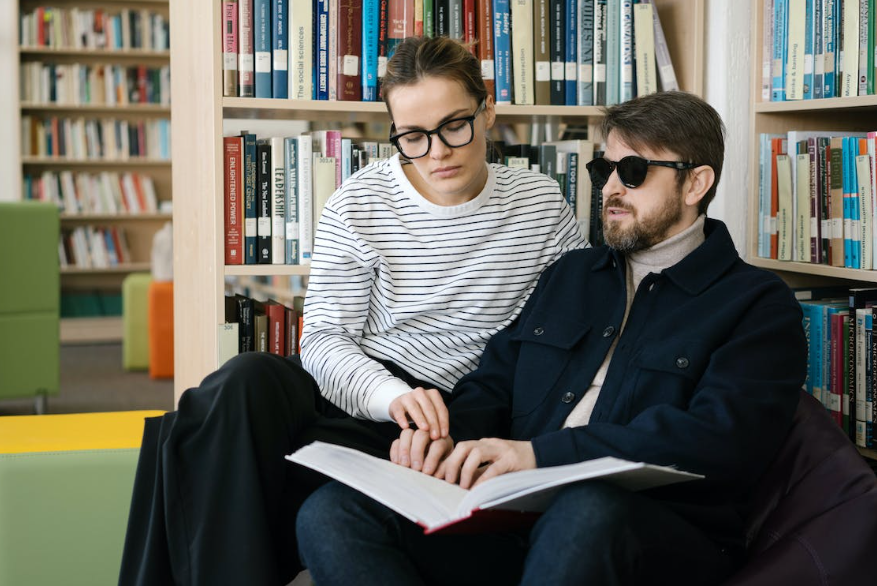Mindfulness Using Senses
Practicing mindfulness with the 5-senses allows us people, who may be suffering from situational anxiety to come back to the present moment, develop a better sense of self, and re-ground to feel less anxious or lost.

Selfpause Affirmation App
Download the app to get 1,000’s of affirmation meditations and everything you need to write, record and listen to your own.
One of the best ways to practice mindfulness is through your senses. You can begin by watching the way your breath moves, or noticing how a liquid rolls over your tongue. You can also take in the smell of your food and the air around you. It’s also beneficial to carry scented items with you while practicing mindfulness, like lavender or perfume.
Five-senses meditation
The five senses are an important part of the body and meditation can help you focus on them during this exercise. First, you will want to focus on your sense of sight. Try to notice things in the world around you, including nearby objects, distant objects, and colors. You will also want to notice movement and stillness. This meditation helps you to expand your perceptions, so that you can feel more present.
To begin the meditation, sit comfortably, close your eyes, and begin by calling attention to each sense you experience. Then, move from sense to sense, paying special attention to each one. You may even choose to focus on just one sense, and notice how it makes you feel. Eventually, you will become more familiar with which sense works best for you.
Ocean Breath

Ocean Breath is a pranayama (breathing) technique that unifies the mind and body. It is characterized by a deep, hushing sound, and it has been shown to improve health and reduce stress. It is an excellent practice for achieving greater mental clarity and improved sleep. It is a simple technique that requires just a few simple steps.
First, contract your throat slightly. Imagine the sound of the ocean and whisper “ahhh” as you exhale. Keep the constriction on your throat while inhaling, too. You will soon notice that your breath is making an “ocean” sound and flowing in and out like ocean waves.
Ocean Breath is a simple, effective way to learn to focus on the subtleties of life. It improves every aspect of your life. When you breathe deeply and mindfully, you open up your body and allow more oxygen into your lungs, which creates a relaxed and calm feeling. No matter your age, size, or physical limitations, you can practice ocean breathing to relieve stress and improve your overall health. You only need 10 minutes a day to reap the benefits.
To practice this breathing meditation, visualize yourself on a beach, watching a wave roll onto the shore. Match your breath to the waves, noticing the sensations in your body that match the wave picture in your mind. After a few minutes, your attention will be drawn to this wave and you will notice how relaxed you feel.
Observing colors
Observing colors is an excellent way to enhance your mindfulness practice by focusing on the specific colors around you. By focusing on individual colors, you can notice things in a room or a landscape that would otherwise go unnoticed. You can also observe colors in your own home. Focusing on colors allows you to stay focused in the moment, notice details, and focus your attention on what is happening.
This type of meditation is known as mindfulness coloring. Observing colors in this way helps you focus your attention in the present moment, as well as improves your self-regulation. Coloring can also be therapeutic, allowing you to express yourself. This is an effective form of self-expression and can help relieve stress and anxiety.
Observing sounds

Observing sounds is a key component of mindfulness practice. When we hear sounds, we often label them. But it’s also important to note that there are subtler sounds we can notice. These sounds are often obscured by more obvious sounds. By focusing on these sounds, we can return to direct awareness of their sensory qualities.
Often, we are surrounded by a dazzling array of sounds. We may be able to distinguish a friendly voice, the sounds of an airplane soaring overhead, or even tinkling music. We may also be able to listen to muffled sounds like our breath moving through our nostrils or the creaking of our floor or heating system.
It’s important to establish a regular practice of listening to sounds. This exercise, similar to the one we use for deep seeing, involves noticing sounds and thoughts as they happen. It requires a quiet environment where you can sit and listen for three to five minutes. Once you’ve mastered the skill of deep seeing, try observing sounds and thoughts as well.
Observing subtle sounds

Observing subtle sounds is an important component of mindfulness practice. Many people label sounds when they hear them. By focusing on these sensory qualities, people can reconnect to their direct awareness of all sounds. These sounds are part of the environment around us. This can be an excellent exercise for expanding your awareness.
As you sit in silence, you can begin to notice the subtle sounds that surround us. For example, when you sit by a lake, you might hear the waves crashing on the shore, or the rushing current of the river. It can feel calming and give you a feeling of peace. The same can be true when you listen to your own thoughts. During meditation, you can notice how your thoughts change.
When you observe your breath, you also start to notice the other physical sensations in your body. This process is also called scanning the body. As you scan your body, you may also notice the sounds that surround you. This practice helps you experience the present moment fully. Similarly, observing the sounds around you is a great way to develop your own mindfulness practice.
Our Top FAQ's
Practicing mindfulness through your senses can help you to become more present and aware in your daily life by focusing your attention on your sensory experiences in the present moment. This can help you to cultivate a sense of calm and clarity, and to better understand your own thoughts and emotions. It can also help you to develop a greater appreciation for the beauty and richness of your surroundings, and to become more attuned to your own body and physical sensations.
There are many different techniques and exercises you can use to practice mindfulness through your senses. Some examples include:
- Paying attention to your breath as you inhale and exhale
- Focusing on a particular object or scene and trying to notice as many details as possible
- Paying attention to the sensations of your body as you walk, eat, or engage in other activities
- Practicing mindful listening, by focusing on the sounds around you and trying to hear them in a new way
- Engaging in activities that allow you to use all of your senses, such as cooking, gardening, or painting
To bring more awareness to your physical surroundings and your own body and emotions, you can try using your senses to observe and explore the world around you. This might involve paying close attention to the sights, sounds, smells, tastes, and textures you experience as you go about your day. You can also try using your senses to explore your own body and emotions, for example by paying attention to your breath, your physical sensations, or your emotional responses to different situations.
Practicing mindfulness through your senses can be a powerful tool for reducing stress and improving your overall well-being. By focusing your attention on the present moment and your sensory experiences, you can help to reduce the constant stream of thoughts and worries that can contribute to stress and anxiety. This can help you to feel more grounded, present, and at peace, and to cultivate a sense of inner calm and clarity.
Practicing mindfulness through your senses can help you to become more attuned to your own thoughts and feelings, and to the present moment. By focusing your attention on your sensory experiences and the present moment, you can better understand your own thoughts, emotions, and physical sensations. This can help you to become more self-aware and more attuned to your own needs and feelings, and to be more present and engaged in your daily life.
